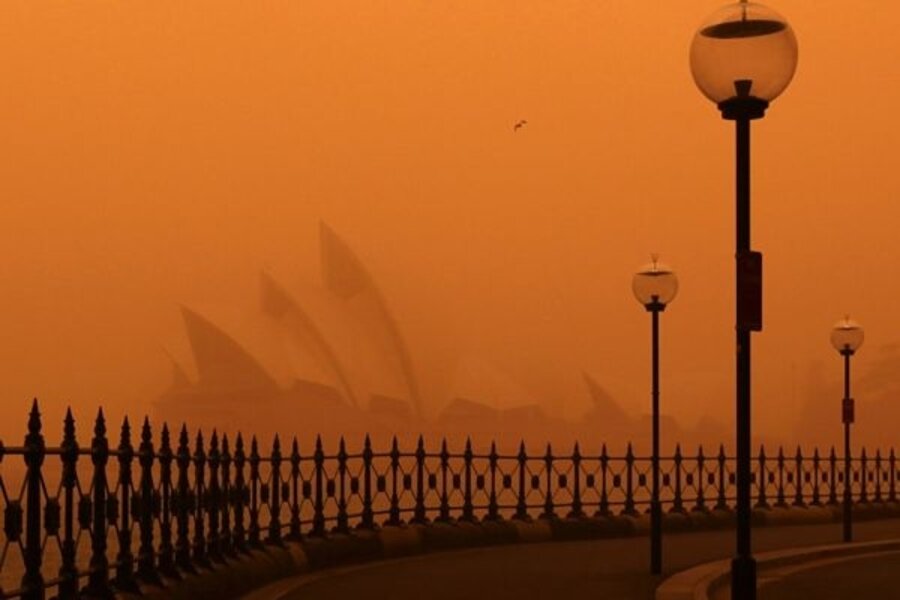Dust storm in Australia turns Sydney into Mars
Loading...
When dust storms blow through Australia's outback, it's par for the course. When they turn Sydney into a Mars look-alike, it's time to sit up and take note.
A swath of eastern Australia labored Wednesday (Aussie time) under the worst dust storm in more than 70 years. Check out this photo gallery we put together.
Any way you look at it, the event is pretty extraordinary. According to Reuters, the storm carried an estimated 5 million tons of dust from the continent's interior to the east coast. A fair bit of that is priceless farm topsoil, according to the report. At one point, the storm was dumping an estimated 75,000 tons an hour into the Pacific off Sydney.
The country's eastern portion, particularly the farmland watered (at least at one time) by the Murray and Darling Rivers, is in its 12th year of severe drought. And forecasters say that it is likely to continue as El Nino strengthens through the rest of the year.
As for the virtually inevitable global-warming question: Researchers and forecasters are loathe to attribute any single storm to climate change. But the storm does represent one kind of weather phenomenon that is expected to become more frequent as the climate warms.
Once it's kicked up, the dust itself has effects on regional and local climate. The particles reflect sunlight back into space, cooling temperatures underneath it somewhat. Scientists at NASA's Goddard Space Flight Center in Greenbelt, Md., published a study two years ago suggesting that dust-triggered cooling over the North Africa and the eastern Atlantic can affect sea-level air pressure and temperatures thousands of miles away. Others have noted that North African dust storms can retard hurricane formation in the Atlantic because its parasol effect keeps the ocean surface cooler than it might otherwise be.
Northeastern Asia, with dry regions such as the Gobi Desert, represent another big source of atmospheric dust. North Africa sends dust out across the Atlantic, over the Caribbean, and into the eastern Pacific Ocean. In the United States, the single largest source for mineral dust smaller than 10 microns is eastern California's Owens Lake, according to the US Geological Survey. Los Angeles emptied the lake, once criss-crossed by steamboats, during the first half of the 20th century.





